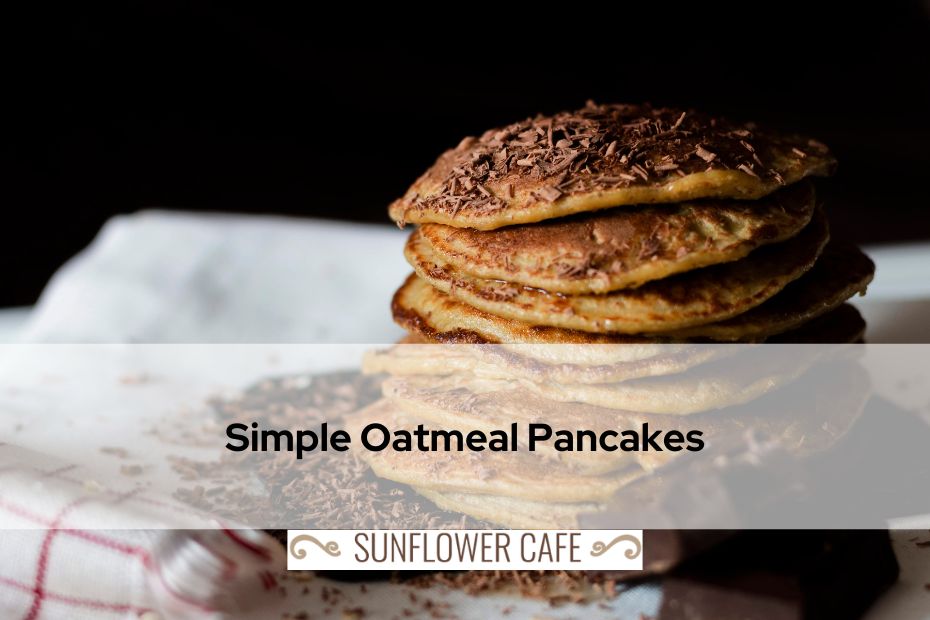I am the kind of person who looks forward to the prospect of eating stacks of pancakes on a Sunday morning while lounging about in my jammies and having a pot of steaming coffee nearby. The truth of the matter is, however, that if I treat myself to a pancake breakfast for breakfast, I only last for a few of hours until my energy level decreases and I start to feel hungry again.
The answer, my good friends, is to include rolled oats into your pancake batter. If you add some oats, which are high in fiber and protein, to the pancake mix you normally use, the end product will be something that is a little bit more nutritious and a lot more fulfilling. Don’t worry, however; our recipe yields pancakes that are just as airy and deserving of a generous coating of maple syrup.
The Pancake Breakfast Crash Can Be Fixed With Oats
The problem with classic pancakes is that they are often made with refined flour and sugar as the two primary ingredients. This means that even though they are tasty, they are a simple carbohydrate that will induce a rise in your blood sugar, followed by a rapid decrease in your blood sugar level. This will give you a fast burst of energy, but it will also leave you hungry immediately after eating them.
This issue may be remedied by include whole grains in the recipe. Oats made from whole grains are rich in fiber and even offer a trace amount of protein (5 grams of protein may be found in a portion size of uncooked half a cup of oats). Both of these will provide you with energy that lasts for a longer period of time, as confirmed by my credentials as a qualified dietitian. Additionally, oats provide a little amount of extra vitamins and minerals to each meal, which is never a bad thing.
Please be aware that while making pancakes, the kind of oats that you should use is rolled oats and not steel-cut oats. Oats with a steel cut need a considerably longer soaking time and have a heartier consistency. Do you want your pancakes to have a greater concentration of oats? You should try our recipe for gluten-free banana oatmeal pancakes.
The soaking process creates the most desirable texture.
The soaking process is essential because it prevents the oats from disrupting the light and airy consistency of the pancakes. You only need to combine the rolled oats with the milk in the mixing bowl, and then you need to set them aside for ten minutes while you assemble the rest of the ingredients. Your pancakes won’t taste as hearty, and you’ll find that the oats themselves are simpler to stomach and absorb as a result of the oats softening and breaking down.
INGREDIENTS
- 1 cup of traditional rolled oats (old-fashioned)
- 1 cup milk, normal or non-dairy
- 2 big eggs
- 1 unsalted tablespoon of butter, plus more as needed for cooking
- 1 tablespoon granulated sugar
- 2/3 cup all-purpose flour
- 2 tablespoons baking powder
- 1/4 teaspoon kosher salt
- An optional quarter of a teaspoon of ground cinnamon
INSTRUCTIONS
- In a large bowl, combine 1 cup of rolled oats with 1 cup of milk and whisk until smooth. Allow the oats to sit for ten minutes so that they may soften. While that is happening, melt one tablespoon of unsalted butter and put it aside so that it can cool.
- To the oats, add the butter, two eggs, and one tablespoon of granulated sugar, and mix to blend all of the ingredients. Do not overmix after adding the 2/3 cup all-purpose flour, the 2 teaspoons of baking powder, the 1/4 teaspoon of kosher salt, and the 1/4 teaspoon of powdered cinnamon, if preferred. Whisk these ingredients together until they are just incorporated. Let stand for 5 minutes longer. In the meanwhile, preheat a big pan made of cast iron or one that does not stick over medium-high heat.
- To coat the pan, add one teaspoon of butter and swirl it around. Put the batter into the pan in amounts that are each 2 tablespoons, and fry them 3 at a time. About three minutes into the cooking process, bubbles should begin to form on the top, the edges should begin to look dry, and the bottoms should become golden brown. After turning the pancakes over, continue cooking them for an additional two to three minutes, or until they are golden brown on both sides.
- Place the pancakes on a platter or in the oven to keep them warm. Cooking the remaining batter in further batches, each with 1 teaspoon of butter, is recommended.
RECIPE NOTES
During storage, the pancakes may be kept fresh in the refrigerator for up to 5 days when sealed in an airtight container, or they can be frozen for up to 2 months.
| Homepage | Click Here |
| Food | Click Here |
